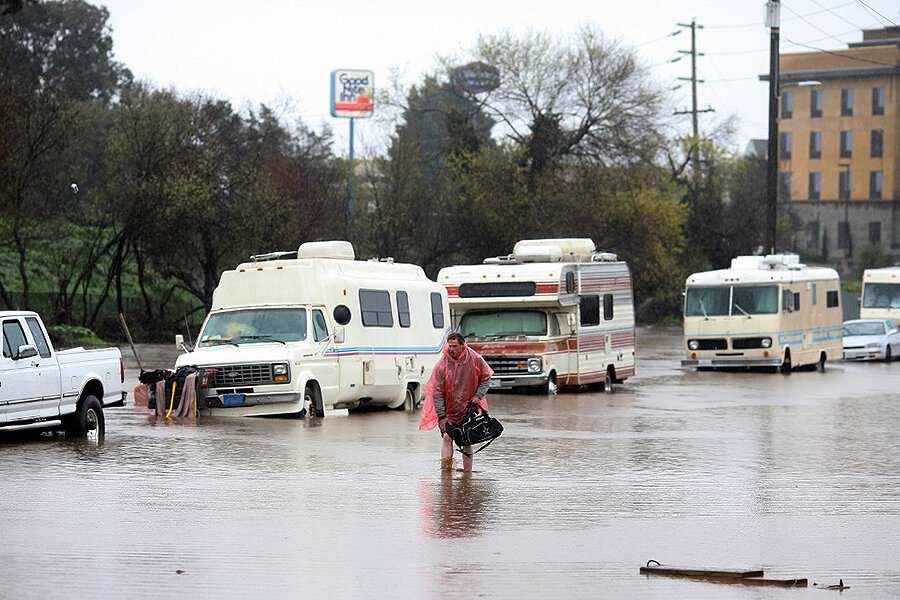Atmospheric rivers: When it rains on the West Coast, it pours
Loading...
The Pineapple Express turns out to be less delicious than it sounds.
One of many streams of vapor flowing through the atmosphere, the Pineapple Express is an example of the weather phenomenon known as an “atmospheric river.” These relatively narrow bands play a major role in the transportation of water around the planet, bringing vast quantities of vapor from one place to another.
But in doing so, they can also wreak havoc when they make landfall and dump their cargo, causing flooding and extreme weather, according to a paper published Monday in Nature Geoscience.
Despite floating through the sky, these rivers easily outstrip their earthbound counterparts. Thousands of miles long and hundreds of miles wide, large atmospheric rivers can carry more than a dozen times the water of the Mississippi River at its mouth, according to the National Oceanic and Atmospheric Administration, and account for up to half of the West Coast’s annual precipitation.
Their outsized impact on the West Coast can be both a blessing and a curse. This year, they’ve brought drought-stricken California some much needed good news, but also caused a lot of damage.
"This has been a very active winter, atmospheric river-wise," reported Jeff Zimmerman of the National Weather Service, according to NPR. "We've probably had 10 or more ... this winter."
The state isn't out of the woods quite yet, but the replenished snowpack may ease water restrictions. On the other hand, big storms have thrashed the state all winter, with the most recent on Monday.
California is no stranger to extreme precipitation events – it even lost an iconic sequoia to an atmospheric river storm in January – and the new research sheds light on why. Scientists have long known that atmospheric rivers can wallop communities with large floods when they make landfall, but study authors Duane Waliser and Bin Guan wanted to study exactly how the streams affected surface winds and rains.
To do so, they applied a new atmospheric river-recognizing algorithm to almost 20 years of weather data, from 1997 to 2014, to reach some surprising conclusions.
The duo found that the vapor ribbons are in fact quite windy, although they write that this result was “not completely unexpected,” given that wind is a necessary ingredient in the transport of water vapor up from the tropics.
What was more surprising was just how damaging atmospheric rivers could be. Atmospheric rivers appeared to be responsible for up to half of the top 2 percent of high-wind, high-precipitation weather events, inducing tempests likely to feature winds twice as strong as a standard storm.
California isn’t the only victim. Dr. Waliser was also able to connect many of Europe’s worst storms during the time period studied with atmospheric rivers.
Such storms' combination of wind and rain makes them incredibly costly. Over the last twenty years, 19 European storms caused a billion dollars or more in damage. "And so out of these 19 storms," Waliser told NPR, "we associated atmospheric rivers with 14 out of the 19."
Some hope a more detailed understanding of these remarkable weather patterns might help states be better prepared in the future.
The duo suggests that future studies analyze the behavior of atmospheric rivers more deeply and find out how they relate with “specific wind-related hazards, such as storm surge and coastal flooding, wind damage, marine weather and significant wave height.”








